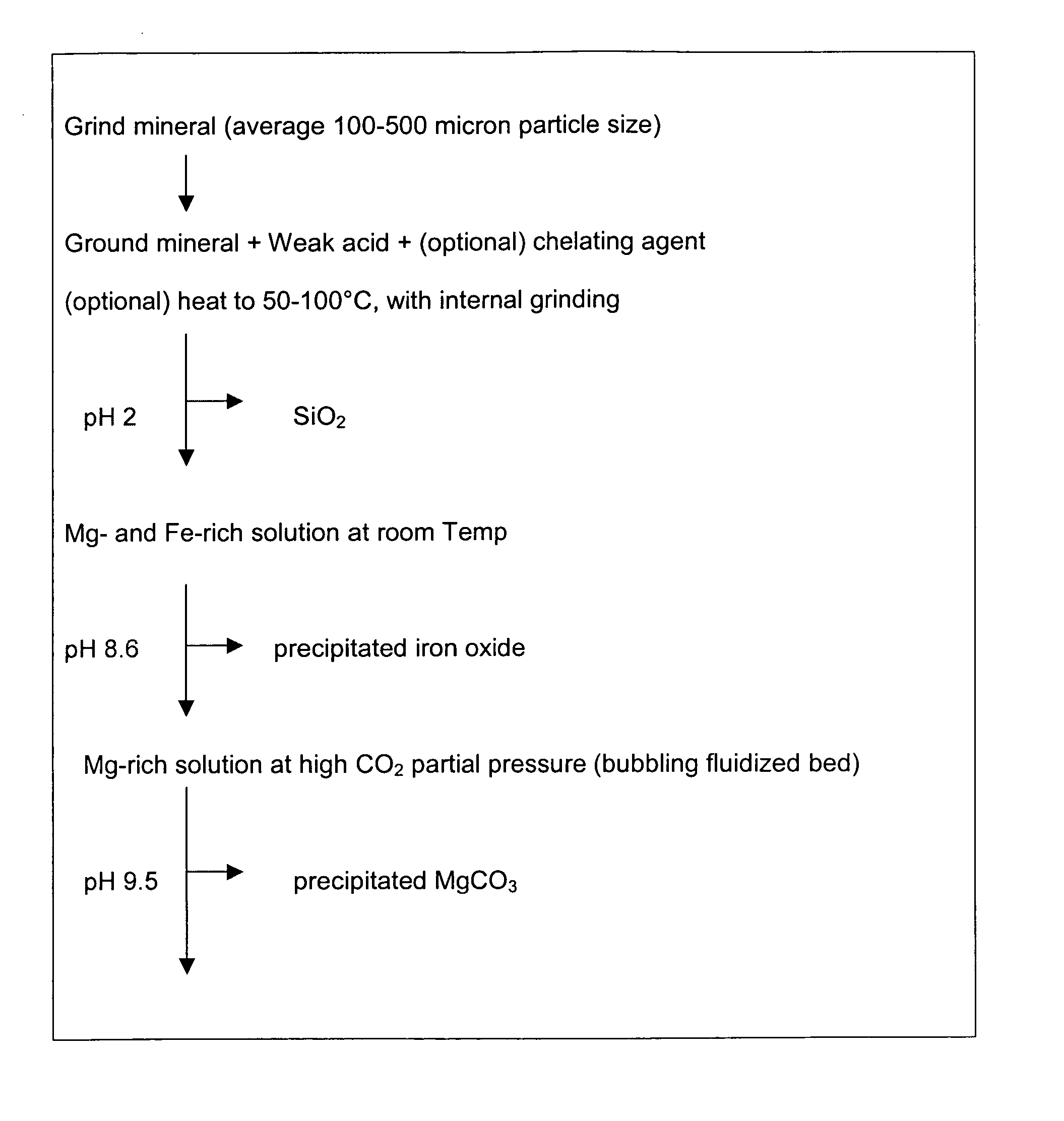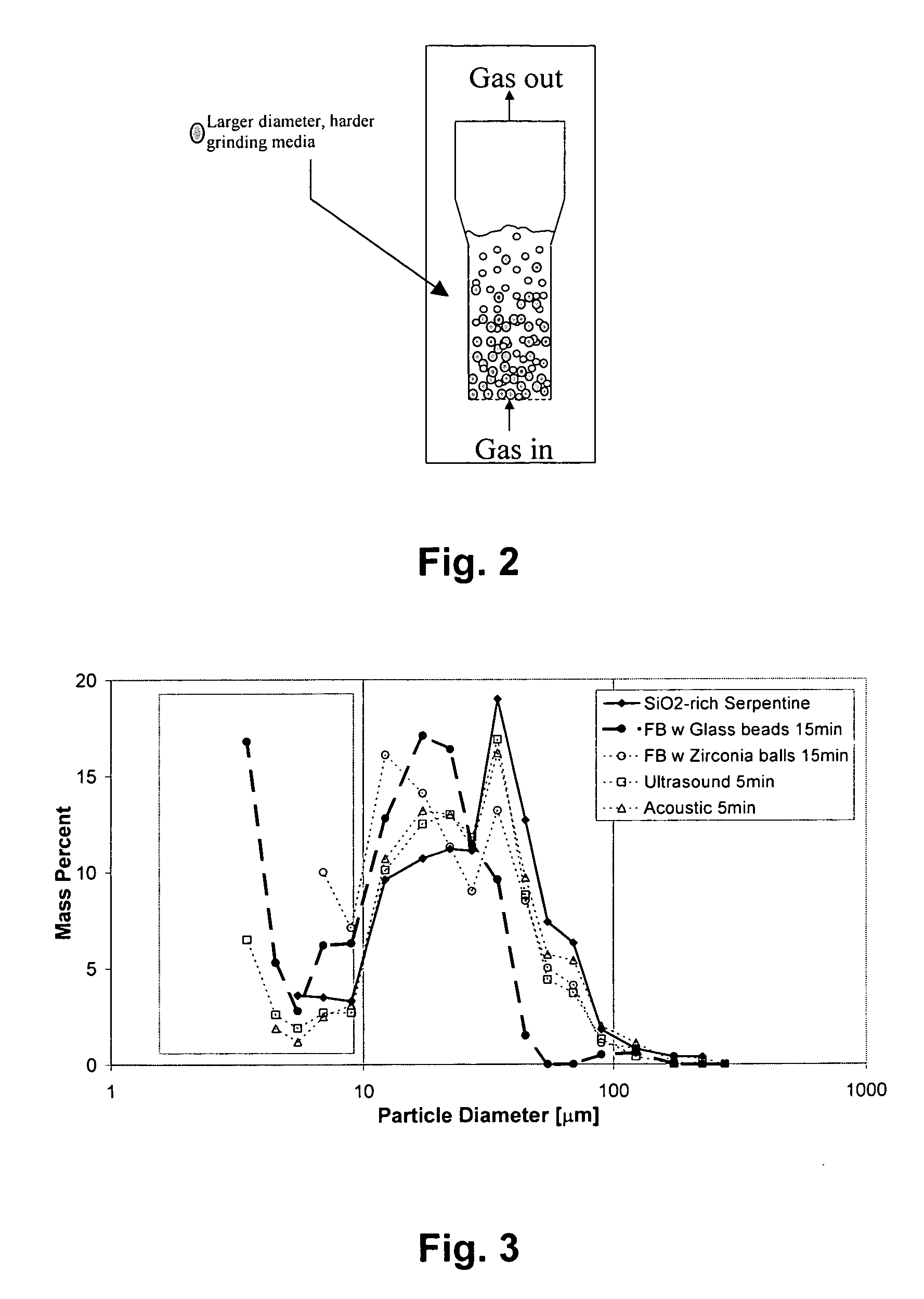Carbon dioxide sequestration using alkaline earth metal-bearing minerals
a technology of alkaline earth metals and carbon dioxide, which is applied in the direction of hydrogen sulfides, separation processes, sulfur compounds, etc., can solve the problems of blocking the further dissolution of magnesium species in mineral particles, and achieve the effect of enhancing mineral dissolution and subsequent carbon sequestration
- Summary
- Abstract
- Description
- Claims
- Application Information
AI Technical Summary
Benefits of technology
Problems solved by technology
Method used
Image
Examples
example 1
Removal of SiO2 Layers from the Surface of the Serpentine Particles
[0041] Removing the diffusion limiting SiO2 layer to expose inner Mg-rich layers is important to promote the further dissolution of the mineral particles. Several methods were tested including internal grinding using larger and harder materials as the grinding media, ultrasound, and microwave.
[0042] Serpentine was selected as the magnesium-containing mineral for testing. Serpentine was ground and then dissolved in 1M HCl for five hours at 70° C. and ambient pressure. The solids were then collected via vacuum filtration and washed with distilled water three times before air-drying. The recovered solids had thick layers of SiO2 skeleton remaining on the surface of the mineral particles. Six sets of the slurries were prepared using these recovered solids. The solids concentration was 2.5 g / 80 mL, which was ideal for particle size analysis using a SediGraph5100 particle size analyzer from Micromeritics Corp.
[0043] Th...
example 2
Dissolution of Serpentine
[0048] Various agents were tested for their performance in dissolving magnesium into solution from serpentine particles. The tests were carried out at ambient temperature and pressure using a 15 mg / mL initial solids concentration in aqueous solution. As shown in FIG. 5, a combination of weak acids (1.0 vol % orthophosphoric acid and 0.9 wt % oxalic acid) with a chelating agent (0.1 wt % EDTA) provided the most rapid dissolution rate.
example 3
Effect of Temperature on Dissolution of Serpentine
[0049] The effect of temperature on the dissolution rate of magnesium from serpentine particles was tested. The serpentine particles were present in an initial solids concentration of 25 mg / mL in aqueous solution containing 0.4M NaHCO3. Concentrations of magnesium in the solution were measured at increasing temperatures over a 20 minute time period. As shown in FIG. 6, the dissolution rate of serpentine increased substantially linearly with temperature over the measured time period.
PUM
| Property | Measurement | Unit |
|---|---|---|
| temperature | aaaaa | aaaaa |
| size | aaaaa | aaaaa |
| particle size | aaaaa | aaaaa |
Abstract
Description
Claims
Application Information
 Login to View More
Login to View More - R&D
- Intellectual Property
- Life Sciences
- Materials
- Tech Scout
- Unparalleled Data Quality
- Higher Quality Content
- 60% Fewer Hallucinations
Browse by: Latest US Patents, China's latest patents, Technical Efficacy Thesaurus, Application Domain, Technology Topic, Popular Technical Reports.
© 2025 PatSnap. All rights reserved.Legal|Privacy policy|Modern Slavery Act Transparency Statement|Sitemap|About US| Contact US: help@patsnap.com



